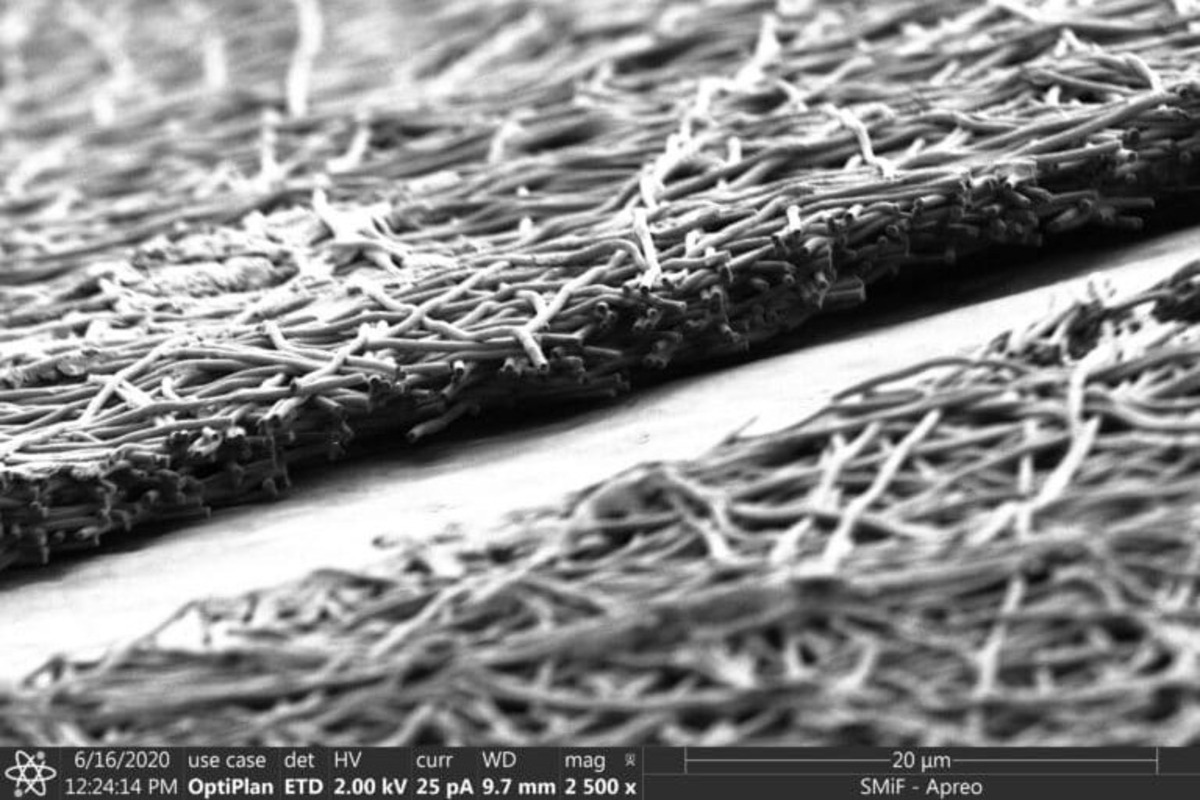
Biomedical Engineers Use Silkworms to Enhance Organ-Like Tissues Grown in the Lab
June 13, 2024| |
Biomedical engineers at Duke University developed an ultrathin silk membrane that can be used in an organ-on-a-chip (OOC) model to mimic the natural environment of cells and tissues within the body. Their findings, published in Science Advances, open new opportunities to improve organs like the brain, liver, and lungs, and contribute to the development of test therapeutics.
OOC systems have helped researchers better understand human biology through dynamic modeling of tissue structures, studying organ functions, and modeling diseases. However, the challenge arises with the design of the chips which usually use thick and non-degradable polymer membranes as support structures.
The research team used silk fibroin, a protein created by silkworms, to bring the membrane thickness down from 50 microns to five or fewer. “The new microfluidic chip system's ability to simulate in vivo-like tissue-tissue interfaces and induce the formation of specialized cells, such as fenestrated endothelium and mature glomerular podocytes from stem cells, holds significant potential for advancing our understanding of human organ development, disease progression, and therapeutic development,” said Samira Musah, Assistant Professor of Biomedical Engineering.
They hope that the technology could help better understand kidney diseases and develop models that identify new biomarkers of the disease. “This could also be used to help us screen for drug candidates for several kidney disease models. The possibilities are very exciting,” said George (Xingrui) Mou, a PhD student and the first author of the paper.
For more information, read the article from Duke University Pratt School of Engineering.
| |
You might also like:
- Silkworms Engineered for Super Silk
- CRISPR Silkworms Produce Better Silk Fibers
- Gene Editing Technique Used to Develop Spider Silk-producing Silkworm
Biotech Updates is a weekly newsletter of ISAAA, a not-for-profit organization. It is distributed for free to over 22,000 subscribers worldwide to inform them about the key developments in biosciences, especially in biotechnology. Your support will help us in our mission to feed the world with knowledge. You can help by donating as little as $10.
-
See more articles:
-
Plant
- Transgenic Expression of Rubisco Factors Increases Maize's Photosynthesis and Chilling Tolerance
- Researchers Reveal Gene That Boost Resistance of Crops Against Blast Disease
- University of Nebraska–Lincoln Team Develops Technique to Speed Up Corn Gene Identification
- Experts Tweak Sugarcane Leaf Angle for Biomass Boost
- ISAAA Inc. Holds a Public Briefing in Iloilo City for Filipino Farmers
-
Health
- Biomedical Engineers Use Silkworms to Enhance Organ-Like Tissues Grown in the Lab
- Enhanced Prime Editing System Creates Gene-Sized Edits in Human Cells
-
Read the latest: - Biotech Updates (December 17, 2025)
- Gene Editing Supplement (December 17, 2025)
- Gene Drive Supplement (February 22, 2023)
-
Subscribe to BU: - Share
- Tweet

